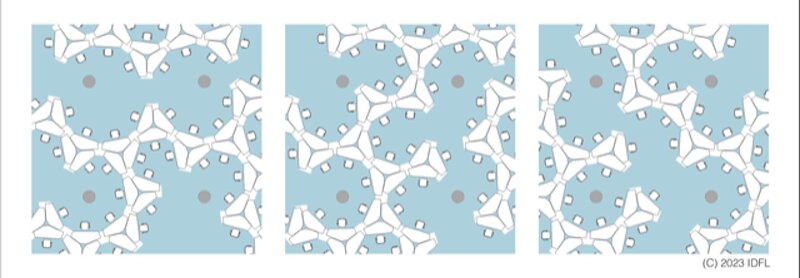
When building digital newsrooms, we are all pioneers, no matter how much experience we've had over these past decades. And even after COVID drove the trend to home office and shared desks, as digital continues to evolve, there are no easy answers, roadmaps or owner’s manual.
Sometimes, however, the answers reveal themselves in an “aha” moment.
That’s the feeling I experienced when I worked with Iztok Lemajic of the architecture and design firm Innovative Design for Living, the architect hired to solve a problem for a mid-size regional news company. It’s a problem that plagues many newsrooms; there are always physical obstacles to work around — columns and posts — that get in the way of the best-laid plans and force compromises to the coherent and logical placement of desks and departments.
We devised an elegant solution (more about that in a moment). The proposal suggested a solution to an even greater problem that is universal in the news business: how to design a newsroom flexible enough to respond to the needs of the future, knowing that change is inevitable but not yet knowing how things will change. The rapid development of technology, workflows, platforms, organizational progress and story-telling tools and techniques means the changes will likely come fast and from many directions.
Newsrooms in the past stayed pretty much the same for years — even decades. Today, you have to design for the current realities and the likelihood that digital evolution will require a physical reorganization in the near future.
Newsrooms today are configured in many ways but generally include a central “hub” of top decision-makers surrounded by linear rows of desks for the various departments and staff, incorporating and organized around sections and platforms. The traditional newsroom staff — journalists and editors — often now work simultaneously and side by side with visual and audio journalists, data experts, platform specialists, marketers and other non-traditional newsroom staff.
One problem with newsroom space is the inflexible demands of the physical structure. Columns, corners and other obstacles may make optimizing linear or square configurations of desks and workspaces challenging. Working around these structures often requires compromises that might interfere with a more coherent design. So you end up with individuals stuck behind a post, away from their colleagues, or whole departments isolated in other parts of the building.
There are many ways to approach these challenges, which vary from newsroom to newsroom. One approach is to develop desk configurations that break away from the traditional linear designs.
This solution replaces the standard linear configuration with triangular three-desk modules connected to similar modules (as many as needed) around a central decision-making hub. Unlike long, linear rows of desks, these three-desk modules can rotate around the others, changing the angles between them and those connecting to them, allowing them to move and be reconfigured as needed.
This “molecular system” looks like a molecular chain, as desks can snake around objects that interfere with straight rows. It can be tailored to the needs of a variety of newsrooms, creating layouts that fit any space and allow fast and direct communication.
Whatever the solution, architecture is an integral part of digital strategy, as important as audience, workflow and structures, people, products and technology. Ignore any of these elements, and the whole process can fall apart. Interior design supports every other part of your digital transformation and must be truly flexible to allow organizations to change teams, team size or team configuration as needed. Newsrooms also must meet the evolving needs of production in terms of lights and acoustics to allow, for instance, the shooting and editing of video and audio. Quiet places for face-to-face meetings are also essential.
So, newsroom designs cannot be “one and done.” Design, as much as any other component of the modern newsroom, is a critical consideration in being flexible enough to “future-proof “ operations.
Dietmar Schantin, Ph.D., is the founder and principal at the IFMS Media Consultancy and co-founder of the AI-Collective, specializing in strategies and AI applications in news organizations. He can be reached at ds@ifms-ltd.com or @dschantin. Dietmar Schantin is a renowned figure in the media industry, having transformed the editorial and commercial operations of various media brands across the globe, including The Wall Street Journal, Dow Jones, the Handelsblatt in Germany and the New Zealand Herald. He is an expert in business strategy, technology and organizational strategies. In 2012, he founded IFMS Media LTD after serving as the executive director of WAN-IFRA, the global association of news publishers. With a Ph.D. in economics and technology, Dietmar has focused on business strategy development and transformation throughout his career. He frequently speaks at international media conferences and is a familiar face on jury panels for digital media awards. Currently based in the U.K. and Austria, he is recognized as a trusted voice in the media industry.
Comments
No comments on this item Please log in to comment by clicking here